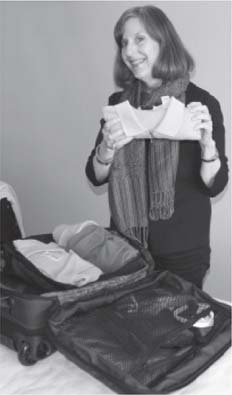Tourist Information
Before Your Trip
In Croatia, Slovenia, and Bosnia-Herzegovina
Communicating
Hurdling the Language Barrier
Telephones
Internet Access
Mail
Transportation
By Car or Public Transportation?
Map: Public Transportation in Croatia & Slovenia
Public Transportation
Renting a Car
Map: Driving: Distance & Time
Driving
Cheap Flights
Resources
Resources from Rick Steves
Maps
Other Guidebooks
Recommended Books and Movies
Holidays and Festivals
Conversions and Climate
Numbers and Stumblers
Metric Conversions
Clothing Sizes
Climate
Fahrenheit and Celsius Conversion
Packing Checklist
Croatian Survival Phrases
Slovenian Survival Phrases
Pronouncing Place Names
National tourist offices are a wealth of information. Before your trip, visit each country’s website for events, activities, and attractions by region. Explore information on Croatia’s islands and active tourism (tel. 212/279-8672, http://us.croatia.hr), Slovenia’s outdoor activities and tourist farms (www.slovenia.info), and Bosnia-Herzegovina’s hiking opportunities and well-preserved historical sites (www.bhtourism.ba).
Your best first stop in every town is generally the tourist information office—abbreviated TI in this book (though locally, you may see them marked TZ, for turistička zajednica). Throughout Croatia and Slovenia, you’ll find TIs are usually well-organized and always have an English-speaking staff; Bosnian TIs can be more hit-or-miss.
TIs are good places to get a city map and information on public transit (including bus and train schedules), walking tours, special events, and nightlife. Many TIs have information on the entire country or at least the region, so try to pick up maps for destinations you’ll be visiting later in your trip. If you’re arriving in town after the TI closes, call ahead or pick up a map in a neighboring town.
The TIs in these countries are run by the government, which means their information isn’t colored by a drive for profit. I find TIs in Croatia and Slovenia to be better informed and more helpful than in most other parts of Europe. Local TIs are not allowed to make money by running a room-booking service—though they can almost always give you a list of local hotels and private rooms. If they’re not too busy, they can call around for you to check on availability. While every major town has at least one travel agency with a room-booking service, even if there’s no “fee,” you’ll save yourself and your host money by going direct with the listings in this book.
The language barrier in Croatia and Slovenia is actually smaller than in France, Italy, or Spain. You’ll find that most people in the tourist industry—and virtually all young people—speak excellent English. Bosnia and Montenegro also have many English-speakers.
Of course, not everyone speaks English. Be reasonable in your expectations, especially when trying to communicate with clerks or service workers. It always helps to know a few words of the local language. Croatian and Slovene are closely related, but not identical. Still, they’re similar enough that the same basic words work in both. For example, “hello” is dobar dan in Croatian, and dober dan in Slovene. Hvala means “thank you” in both languages. I’ve listed the essential phrases near the end of this book (beginning on here).
Croatians and Slovenes pronounce a few letters differently than in English, and they add a few diacritics—little markings that signal a particular pronunciation. Here are a few rules of thumb for sounding out unfamiliar words:
J / j sounds like “y” as in “yellow”
C / c sounds like “ts” as in “bats”
Č / č and Ć / ć sound like “ch” as in “chicken”
Š / š sounds like “sh” as in “shrimp”
Ž / ž sounds like “zh” as in “leisure”
Đ / đ (only in Croatian) is like the “dj” sound in “jeans”
Croatian and Slovene are notorious for their seemingly unpronounceable consonant combinations. Most difficult are hv (as in hvala, “thank you”) and nj (as in Bohinj, a lake in Slovenia). Foreigners are notorious for over-pronouncing these combinations. In the combination hv, the h is nearly silent; if you struggle with it, simply leave off the h, or turn the hv into an f (for hvala, just say “FAH-lah”). When you see nj, the j is mostly silent, with a very slight “y” sound that can be omitted: for Bohinj, just say BOH-heen. Listen to locals and imitate.
A few key words are helpful for navigation: trg (pronounced “turg,” square), ulica (OO-leet-sah, road), cesta (TSEH-stah, avenue), autocesta (OW-toh-tseh-stah, expressway), most (mohst, bridge), otok (OH-tohk, island), trajekt (TRAH-yehkt, ferry), and Jadran (YAH-drahs, Adriatic). If you forget the word for “thank you” (hvala), just think of “koala.”
Note that Bosnia and Montenegro each have their own languages, but both are very closely related to Croatian—using virtually all of the same letters and words listed above.
Throughout Croatia and Slovenia, German can be a useful second language (especially in Croatia, which is popular among German-speaking tourists). And a few words of Italian can also come in handy, especially in bicultural Istria.
Learn the key phrases and travel with a phrase book. Consider Lonely Planet’s good Eastern Europe Phrasebook, which includes both Croatian and Slovene, or their in-depth, stand-alone Croatian Phrasebook.
Don’t be afraid to interact with locals—a friendly greeting in their language is an easy icebreaker. Give it your best shot, and the natives will appreciate your efforts.
Smart travelers use the telephone to reserve or reconfirm rooms, get tourist information, reserve restaurants, confirm tour times, or phone home. This section covers dialing instructions, phone cards, and types of phones (for more in-depth information, see www.ricksteves.com/phoning).
How to Dial
Calling from the US to Europe, or vice versa, is simple—once you break the code. The European calling chart in this chapter will walk you through it.
Dialing Domestically Within Croatia or Slovenia
The following instructions apply whether you’re dialing from a landline (such as a pay phone or your hotel-room phone) or a Croatian or Slovenian mobile phone.
Croatia and Slovenia, like much of the US, use an area-code dialing system. This means you dial the local number when calling within a city, and add the area code (which starts with a 0) if calling long distance within the same country. For example, Dubrovnik’s area code is 020, and the number of one of my recommended Dubrovnik B&Bs is 453-834. To call the B&B within Dubrovnik, just dial 453-834. To call it from Split, dial 020/453-834. (Bosnia and Montenegro work the same way.)
In Croatia, mobile phone numbers begin with 09, and numbers beginning with 060 are pricey toll lines. Slovenian phone numbers beginning with 080 are toll-free; 090 and 089 denote expensive toll lines. Mobile phone numbers in Slovenia usually begin with 03, 04, 05, or 07.
Dialing Internationally to or from Croatia and Slovenia
If you want to make an international call, follow these steps:
• Dial the international access code (00 if you’re calling from Europe, 011 from the US or Canada). If you’re dialing from a mobile phone, you can replace the international access code with +, which works regardless of where you’re calling from. (On many mobile phones, you can insert a + by pressing and holding the 0 key.)
• Dial the country code of the country you’re calling (385 for Croatia, 386 for Slovenia, 387 for Bosnia-Herzegovina, 382 for Montenegro, or 1 for the US or Canada).
• Dial the area code (if applicable) and the local number—keeping in mind that you must drop the initial zero of the area code when calling from another country to Croatia, Slovenia, Bosnia, or Montenegro (the European calling chart lists specifics per country).
Calling from the US to Croatia: To call a recommended Dubrovnik B&B from the US, dial 011 (US access code), 385 (Croatia’s country code), 20 (Dubrovnik’s area code minus the initial zero), then 453-834 (local number). The same formula works for Slovenia, Bosnia, and Montenegro.
Calling from any European country to the US: To call my office in Edmonds, Washington, from anywhere in Europe, I dial 00 (Europe’s access code), 1 (US country code), 425 (Edmonds’ area code), and 771-8303.
Mobile Phones
Traveling with a mobile phone is handy and practical. There are two basic options: roaming with your own phone (expensive but easy) or buying and using SIM cards with an unlocked phone (a bit more hassle, but potentially much cheaper).
Roaming with Your US Mobile Phone: This pricier option can be worthwhile if you won’t be making or receiving many calls, don’t want to bother with SIM cards, or want to stay reachable at your US number. Start by calling your mobile-phone service provider to ask whether your phone works in Europe and what the rates are (likely $1.29-1.99 per minute to make or receive calls, and 20-50 cents to send or receive text messages). Tell them to enable international calling on your account, and if you know you’ll be making multiple calls, ask your carrier about any global calling deals to lower the per-minute costs. When you land in Europe, turn on your phone and—bingo!—you have service. Because you’ll pay for receiving calls and texts, be sure your family knows to call only in an emergency. Note that Verizon and Sprint use a different technology than European providers, so their phones are less likely to work abroad; if yours doesn’t, your provider may be able to send you a loaner phone (arrange in advance).
Buying and Using SIM Cards in Europe: If you’re comfortable with mobile-phone technology, will be making lots of calls, and want to save some serious money, consider this very affordable alternative: Carry an unlocked mobile phone, and use it with a European SIM card to get much cheaper rates.
Getting an unlocked phone may be easier than you think. You may already have an old, unused mobile phone in a drawer somewhere. When you got the phone, it was probably “locked” to work only with one company—but if your contract is now up, your provider may be willing to send you a code to unlock it. Just call and ask. Otherwise, you can simply buy an unlocked phone: Search your favorite online shopping site for an “unlocked quad-band phone” before you go, or wait until you get to Europe and buy one at a mobile-phone shop there. Either way, a basic model costs less than $50.
Once in Europe, buy a SIM card—the little chip that inserts into your phone (either under the battery, or in a slot on the side)—to equip the phone with a European number. (Note that smaller “micro-SIM” or “nano-SIM” cards—used in some iPhones—are less widely available.) SIM cards are sold at mobile-phone shops, department-store electronics counters, and some newsstand kiosks for $5-10, and usually include about that much prepaid calling credit (making the card itself virtually free). In most places, buying a SIM card is as easy as buying a pack of gum—and almost as cheap. (In some countries—including Italy, Germany, and Hungary—it can take a bit longer, because you have to show your passport and be registered.) Because SIM cards are prepaid, there’s no contract and no commitment (in fact, they expire after just a few months of disuse); I buy one even if I’m in a country for only a few days.
When using a SIM card in its home country, it’s free to receive calls and texts, and it’s cheap to make calls—domestic calls average 20-30 cents per minute (though toll lines can be substantially more). Rates are higher if you’re roaming in another country, but as long as you stay within the European Union, these fees are capped (about 30 cents per minute for making calls or 10 cents per minute for receiving calls). Texting is cheap even if roaming in another country. Particularly inexpensive SIM card brands let you call either within Europe or to the US for less than 10 cents per minute.
When purchasing a SIM card, always ask about fees for domestic and international calls, roaming charges, and how to check your credit balance and buy more time. If text or voice prompts are in another language, ask the clerk whether they can be switched to English.
It’s also possible to buy an inexpensive mobile phone in Europe that already comes with a SIM card. While these phones are generally locked to work with just one provider (and therefore can’t be reused on future trips), they may be less hassle than buying an unlocked phone and a SIM card separately.
Mobile-Phone Calling Apps: If you have a smartphone, you can use it to make free or cheap calls in Europe by using a calling app such as Skype or FaceTime when you’re on Wi-Fi; for details, see the next section.
Calling over the Internet
Some things that seem too good to be true...actually are true. If you’re traveling with a smartphone, tablet, or laptop, you can make free calls over the Internet to another wireless device (or you can pay a few cents to make calls from your computer or smartphone to a telephone). If both devices have cameras, you can even see each other while you chat. The major providers are Skype, Google Talk, and (on Apple devices) FaceTime. You can get online at a Wi-Fi hotspot and use these apps to make calls without ringing up expensive roaming charges (though call quality can be spotty on slow connections). You can make Internet calls even if you’re traveling without your own mobile device: Many European Internet cafés have Skype, as well as microphones and webcams, on their terminals—just log on and chat away.
Landline Telephones
Just like Americans, these days most Europeans make the majority of their calls on mobile phones. But you’ll still encounter landlines in hotel rooms and at pay phones.
Hotel-Room Phones: Calling from your hotel room can be great for local calls and for international calls if you have an international phone card (described later). Otherwise, hotel-room phones can be an almost criminal rip-off for long-distance or international calls. Many hotels charge a fee for local and sometimes even “toll-free” numbers—always ask for the rates before you dial.
If you’re sleeping in my recommended sobe (rooms in private homes) or apartments, be aware that you’re unlikely to have a telephone in your room.
Public Pay Phones: Coin-op phones are becoming extinct in Europe. To make calls from public phones, you’ll need a prepaid phone card, described next.
Telephone Cards
There are two types of phone cards: insertable (for pay phones) and international (cheap for overseas calls and usable from any type of phone). A phone card works only in the country where you bought it (your Slovenian phone card is worthless in Croatia), so if you have a live card at the end of your trip, give it to another traveler to use—most cards expire three to six months after the first use.
Insertable Phone Cards: These cards are a convenient way to pay for calls from public pay phones and can be purchased at newsstands and post offices. Simply insert the prepaid card, wait for a dial tone, and make your call. The cost of your call, whether local or international, is automatically deducted while you talk. Insertable phone cards are a good deal for calling within Europe, but calling the US can be pricey (at least 50 cents/minute). Be aware that with the prevalence of mobile phones, public phones are getting harder to find.
International Phone Cards: Although common throughout much of Europe, prepaid phone cards are relatively rare in Croatia and Slovenia, and the savings aren’t that enticing (calls to the US generally cost around 25-50 cents per minute). They work from any type of phone, including your hotel-room phone or a mobile phone with a European SIM card. To use the card, dial a local or toll-free access number, then enter your scratch-to-reveal PIN code. Some hotels block their phones from accepting these access numbers. (Ask your hotelier about access and rates before you call.) But a few of the cards I’ve tried have an access number that’s not toll-free—which means that you pay both for the call, and for the time being deducted from your card. If you want to experiment with international phone cards, try looking for fliers advertising long-distance rates, or ask about the cards at Internet cafés, newsstands, souvenir shops, and youth hostels. Buy a low denomination in case the card is a dud.
US Calling Cards: These cards, such as the ones offered by AT&T, Verizon, and Sprint, are a rotten value, and are being phased out. Try any of the options outlined earlier.
Useful Phone Numbers
Emergency Needs
For medical or other emergencies, dial 112 in Croatia, Slovenia, Montenegro, and Bosnia-Herzegovina.
US Embassies
In Croatia: Ulica Thomasa Jeffersona 2, Zagreb, passport services available Mon-Thu 13:00-15:00 plus Wed 9:00-11:00, tel. 01/661-2200, after business-hours tel. 01/661-2400, consular services tel. 01/661-2300, http://zagreb.usembassy.gov
In Slovenia: Prešernova 31, Ljubljana, passport services available Mon-Fri 9:00-11:30 & 13:00-15:00, tel. 01/200-5500, http://slovenia.usembassy.gov
In Montenegro: Džona Džeksona 2, Podgorica, must call for appointment, tel. 020/410-500, http://podgorica.usembassy.gov
In Bosnia-Herzegovina: Ulica Robert C. Frasure 1, Sarajevo, passport services available Mon-Fri 14:00-15:30 plus Fri 8:00-11:30, tel. 033/704-000, http://sarajevo.usembassy.gov. There’s also a branch office in Mostar (Husnije Repca 3, tel. 036/580-580).
Canadian Embassies and Consulates
In Croatia: Prilaz Đure Deželića 4, Zagreb, Mon-Thu 10:00-12:00 & 13:00-15:00, Fri 10:00-13:00, tel. 01/488-1200, after-hours emergencies call collect Canadian tel. 613/996-8885, www.canadainternational.gc.ca/croatia-croatie
In Slovenia: Consulate at Trg Republike 3, 12th floor, Ljubljana, Mon-Fri 9:00-13:00, tel. 01/252-4444, after-hours emergencies call collect Canadian tel. 613/996-8885, some services provided through Canadian Embassy in Budapest, Hungary (listed below), www.canadainternational.gc.ca/hungary-hongrie
In Montenegro: Contact the Canadian Embassy in Belgrade, Serbia; from Montenegro dial 00-381-11-306-3000, after-hours emergencies call collect Canadian tel. 613/996-8885, www.canadainternational.gc.ca/serbia-serbie
In Bosnia-Herzegovina: Contact the Canadian Embassy in Budapest, Hungary; from Bosnia-Herzegovina dial 00-36-1-392-3360, for after-hours emergencies call collect Canadian tel. 613/996-8885, www.canadainternational.gc.ca/hungary-hongrie
Travel Advisories
US Department of State: Tel. 888-407-4747, from outside US tel. 1-202-501-4444, www.travel.state.gov
Canadian Department of Foreign Affairs: Canadian tel. 800-387-3124, from outside Canada tel. 1-613-996-8885, www.travel.gc.ca
US Centers for Disease Control and Prevention: Tel. 800-CDC-INFO (800-232-4636), www.cdc.gov/travel
Directory Assistance
Dial 988 in Croatia or Slovenia.
It’s useful to get online periodically as you travel—to confirm trip plans, check train or bus schedules, get weather forecasts, catch up on email, blog or post photos from your trip, or call folks back home (explained earlier, under “Calling over the Internet”).
Your Mobile Device: The majority of accommodations in Slovenia and Croatia offer Wi-Fi, as do many cafés, and free, public hotspots are common—all of which make it very easy to get online with your laptop, tablet, or smartphone. Access is often free, but sometimes there’s a fee. At hotels that charge for access, save money by logging in and out of your account on an as-needed basis. You should be able to stretch a two-hour Wi-Fi pass over a stay of a day or two.
Some hotel rooms and Internet cafés have high-speed Internet jacks that you can plug into with an Ethernet cable.
Public Internet Terminals: Many accommodations offer a guest computer in the lobby with Internet access for guests. If you ask politely, smaller places may let you sit at their desk for a few minutes just to check your email. If your hotel or soba doesn’t have access, ask your hotelier to direct you to the nearest place to get online.
Security: When you’re accessing the Internet with your own device or at a public terminal, using a shared network or computer comes with the potential for increased security risks. If you’re not convinced a connection is secure, avoid accessing any sites (such as your bank’s) that could be vulnerable to fraud.
You can mail one package per day to yourself worth up to $200 duty-free from Europe to the US (mark it “personal purchases”). If you’re sending a gift to someone, mark it “unsolicited gift.” For details, visit www.cbp.gov and search for “Know Before You Go.”
The Croatian and Slovenian postal services work fine, but for quick transatlantic delivery (in either direction), consider services such as DHL (www.dhl.com).
If you’re debating between public transportation and car rental, consider these factors: Cars are best for three or more traveling together (especially families with small kids), those packing heavy, and those scouring the countryside. Trains, buses, and boats are best for solo travelers, blitz tourists, city-to-city travelers, those with an ambitious multicountry itinerary, and those who don’t want to drive in Europe. While a car gives you more freedom, trains, buses, and boats zip you effortlessly and scenically from town to town, usually dropping you in the center, often near a TI.
Cars are a worthless headache in places like Ljubljana and Dubrovnik. But in some parts of Croatia and Slovenia, a car is helpful, if not essential: Istria (especially the hill towns), the Julian Alps, Logarska Dolina, the Karst, and Montenegro’s Bay of Kotor. A trip into Mostar (and on to Sarajevo) is best by car—allowing you to stop off at interesting places en route—but doable by public transportation. In other areas, a car is unnecessary: Ljubljana, Zagreb, and most of the Dalmatian Coast (Dubrovnik, Split, Hvar, and Korčula). For most trips, the best plan is a combination: Use public transportation in some areas, then strategically rent a car for a day or two in a region that merits it. (I’ve noted which areas are best by car, and offered route tips and arrival instructions throughout this book.)
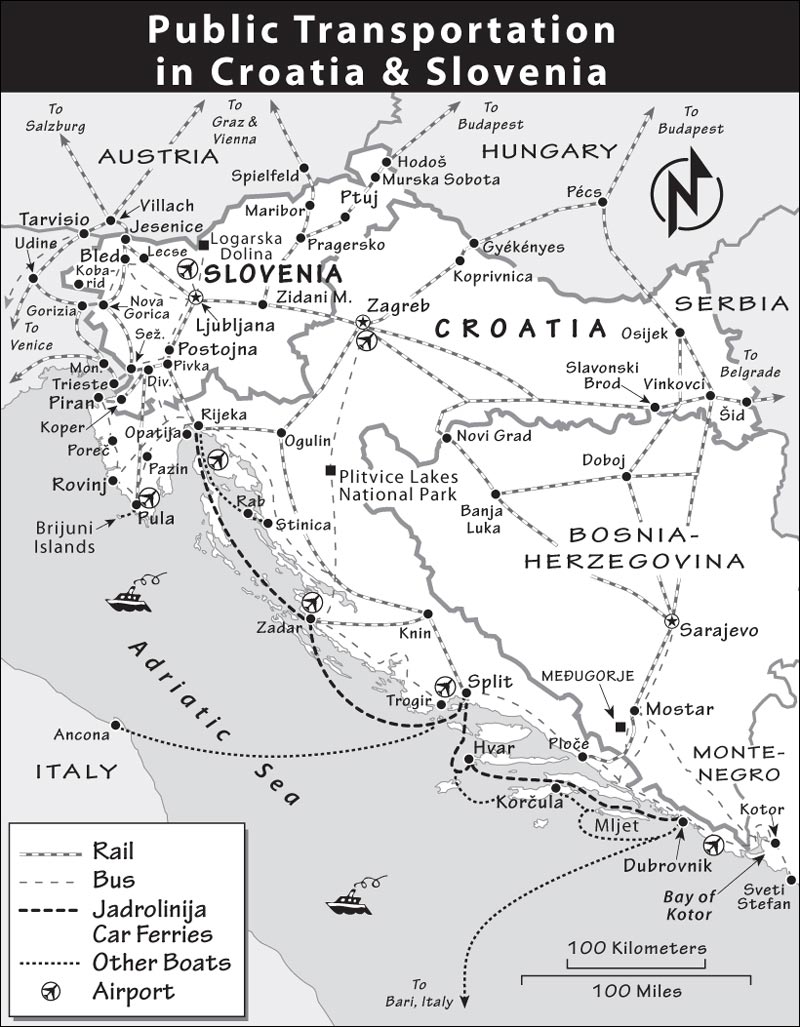
Throughout this book, I’ve suggested whether trains, buses, or boats are better for a particular destination (in the “Connections” section at the end of each chapter). When checking timetables (vozni red), arrivals are prihodi and departures are odhodi; svaki dan means “daily,” but some transit doesn’t run on Sundays (nedjeljom) or holidays (praznikom). You’ll notice that many posted schedules list departure times, but not the duration of the trip; try asking for this information at the ticket window.
Trains
Trains are ideal for certain routes in Croatia and Slovenia (such as between Ljubljana and Zagreb) and for connecting to other countries. But their usefulness is limited, and you’ll find buses, boats, and flights better for most journeys.
Schedules and Tickets: Pick up train schedules from stations as you go. To study ahead on the Web, check www.bahn.com (Germany’s excellent Europe-wide timetable). You can also check www.slo-zeleznice.si for Slovenia, and www.hznet.hr for Croatia. Buy tickets at the train station (or on board, if the station is unattended)—you rarely need a reservation.
Rail Passes: While railpasses can be a good deal in some parts of Europe, they usually aren’t as useful in Croatia or Slovenia. Point-to-point tickets are affordable and often the better option. If your travels are taking you beyond Croatia and Slovenia, consider the flexible Eurail Select Pass, which covers unlimited travel for up to 15 travel days (within a two-month period) in three, four, or five adjacent countries (Croatia and Slovenia are considered a single “country”). A separate combo-pass covers Hungary, Slovenia, and Croatia, and another pass covers Austria, Slovenia, and Croatia. Again, none of these passes is likely to save you much money, but if a pass matches your itinerary, give it a look and crunch the numbers. For options and prices on pertinent Eurail passes, see www.ricksteves.com/rail.
Buses
Buses often take you where trains don’t. For example, train tracks run only as far south as Split; for destinations on the Dalmatian Coast farther south, you’ll rely on buses (or boats). Even on some routes that are served by trains, buses can be a better option. For instance, Ljubljana and Lake Bled are connected by both train and bus—but the bus station is right in the town center of Bled, while the train station is a few miles away. Buses can even be convenient for connecting to islands (via ferry, of course). For example, if heading from the island of Korčula to Dubrovnik, the bus connection runs more frequently than the comparable boat connection, and takes about the same amount of time.
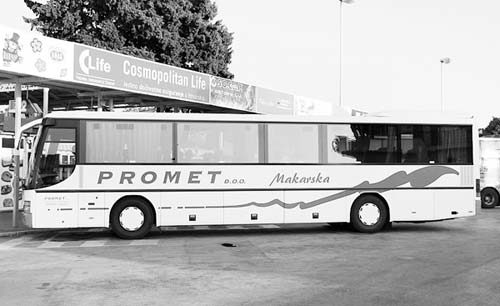
Confusingly, a single bus route can be operated by a variety of different companies, making it difficult to find comprehensive schedules. These online-timetable sites are helpful: www.autobusni-kolodvor.com for Croatia and www.ap-ljubljana.si for Slovenia. For smaller towns, the TI can also help you sort through your options. Get creative with checking schedules: If you’re going from a small town to Split, and that town doesn’t have its own online timetable, try checking the “arrivals” schedules on the Split website (www.ak-split.hr) instead. If your trip involves a connection at an intermediate station, don’t be surprised if it’s difficult to get the schedule details for your onward journey. Be patient, and try calling that town’s TI (or the TI or bus station at your final destination) for details.
Prices vary among companies, even for identical journeys. For popular routes during peak season, drop by the station to buy your ticket a few hours in advance—or even the day before—to ensure getting a seat (ask the bus station ticket office or the local TI how far ahead you should arrive). Buses have some overhead bag storage on board, but you’ll likely check your big bag under the bus (for the extra cost of about $2 per bag).
If you’re headed south along the coast, sitting on the right side comes with substantially better scenery (sit on the left for northbound buses). When choosing a seat, also take the direction of the sun into consideration.
Boats
All along the Croatian coast, slow car ferries and speedy catamarans inexpensively shuttle tourists between major coastal cities and quiet island towns. Boats run often in summer (June-Sept), but frequency drops sharply off-season.
A ferry (trajekt) takes both passengers and cars; while pokey, it can run in almost any weather. The number of cars is limited, but there’s virtually unlimited deck space for walk-on passengers. Watching the ferry crew scurrying around to load and unload cars and trucks onto their boat—especially if it’s a small one—is a ▲▲▲ Croatian experience.
Increasingly, popular tourist destinations in Croatia are connected by much faster, passenger-only catamarans. These are efficient, but they have to slow down (or sometimes can’t run at all) in bad weather. Catamarans are smaller, with limited seats, so they tend to sell out quickly. Because of the high speeds, you’ll generally have to stay inside the boat while en route, rather than being outside on the deck.
Most of Croatia’s boats are operated by the state-run company called Jadrolinija (yah-droh-LEE-nee-yah), which runs a variety of vessels. Most notable are the four big Jadrolinija car ferries: Marko Polo and Liburnija go all the way down the coast from Rijeka to Dubrovnik, and cross to Bari, Italy; Dubrovnik and Ivan Zajc cross between Ancona, Italy and Split. Jadrolinija also runs smaller car ferries along the coast, as well as some faster catamarans (including Adriana, which goes between Split, Hvar, and Vela Luka on Korčula Island).
Buy your ticket before boarding the boat. Each town has a Jadrolinija ticket office, which I’ve listed throughout this book; if the office isn’t at the dock itself, there’s always a small ticket kiosk that opens at the dock before each departure. The main Jadrolinija office is in Rijeka (tel. 051/666-111, www.jadrolinija.hr). For non-Jadrolinija boats, you may have to buy the tickets at a travel agency, or you might buy them at the Jadrolinija office. I’ve tried to list the correct place and time to buy tickets for each boat, but as this changes from year to year, you may have to ask around.
Boat rides are cheap for deck passengers. A short hop, such as from Split to the island of Hvar or Korčula, costs around $5-10 on most boats (strangely, the faster catamarans are usually cheaper than the slow car ferries). For a longer trip, such as from Split to Dubrovnik, figure $20. It’s about $65 for a car and driver to ride the ferry from Split to Dubrovnik (less for shorter trips).
Advance reservations are not necessary for walk-on passengers on car ferries; you can almost always find a seat on the deck or in the onboard café. However, the catamarans can fill up, and it’s typically not possible to buy tickets a day or more in advance. If you’re here at a busy time, it’s worth going out of your way to buy your catamaran tickets early in the day. Ask around locally (at the TI, your soba host, or the boat ticket office) to find out where tickets are sold, what time they go on sale, and how early you should line up to snare one. Because all boats have open seating, it’s smart to show up 30-60 minutes before departure time to get a good seat.
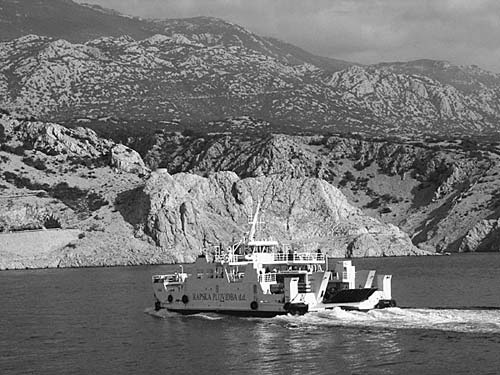
Drivers cannot reserve a car space in advance on most routes. This means you’ll want to arrive at the dock up to a few hours early, especially in peak season. Because volumes flex with the season, the local TI is your best resource for advice on how early to get in line. Notice that on some islands, the car ferry port is a long drive from the main tourist town (for example, Vela Luka on Korčula Island is a 1-hour drive from Korčula town; Stari Grad on Hvar Island is a 20-minute drive from Hvar town).
You can buy overpriced, low-quality food and drinks on board most boats. Bring your own snacks or a picnic instead.
Because Jadrolinija has a virtual monopoly on coastal ferries, their routes don’t always cater to customer demand. But a few new, private companies are beginning to compete with Jadrolinija—most notably, the Krilo catamaran that connects Split and various islands (www.krilo.hr), and the Nona Ana catamaran between Dubrovnik, Mljet Island, and Korčula (www.gv-line.hr).
The boat schedule information in this book changes every year, without fail. It’s essential to confirm before you make your plans. Jadrolinija’s website (www.jadrolinija.hr) is useful, but they don’t post future schedules very far in advance. Once again, local TIs are the single best source of information for how their town is connected to the rest of the coast.
If you’re renting a car, bring your driver’s license. In Slovenia and Bosnia, you’re also required to have an International Driving Permit—an official translation of your driver’s license (sold at your local AAA office for $15 plus the cost of two passport-type photos; www.aaa.com). While that’s the letter of the law, I’ve often rented cars in these countries without having this permit. If all goes well, you’ll likely never be asked to show the permit—but it’s a must if you end up dealing with the police.
Rental companies require you to be at least 18 years old and to have held your license for at least one year. Drivers under the age of 25 may incur a young-driver surcharge, and some rental companies do not rent to anyone 75 or older.
Research car rentals before you go. It’s cheaper to arrange most car rentals from the US. Call several companies and look online to compare rates, or arrange a rental through your hometown travel agent.
Most of the major US rental agencies (including Avis, Budget, Enterprise, Hertz, and Thrifty) have offices throughout Europe. Also consider the two major Europe-based agencies, Europcar and Sixt. It can be cheaper to use a consolidator, such as Auto Europe (www.autoeurope.com) or Europe by Car (www.europebycar.com), which compares rates at several companies to get you the best deal. However, my readers have reported problems with consolidators, ranging from misinformation to unexpected fees; because you’re going through a middleman, it can be more challenging to resolve disputes that arise with the rental agency.
Regardless of the car-rental company you choose, always read the fine print carefully for add-on charges—such as one-way drop-off fees, airport surcharges, or mandatory insurance policies—that aren’t included in the “total price.” You may need to query rental agents pointedly to find out your actual cost.
For the best deal, rent by the week with unlimited mileage. To save money on fuel, ask for a diesel car. I normally rent the smallest, least-expensive model with a stick shift. Almost all rentals are manual by default, so if you need an automatic, request one in advance; be aware that these cars are usually larger models (much more expensive and not as maneuverable on narrow, winding roads).
For a one-week rental, figure on paying roughly $350, not including insurance, fuel, tolls, and parking. Note that short rentals cost significantly more per day, while longer rentals can be cheaper per day.
Be warned that dropping a car off in a different country—say, picking up in Ljubljana and dropping in Dubrovnik—can be prohibitively expensive (see the “Rental-Car Conundrum” sidebar for ways around this). Again, I prefer to connect long distances by train or bus, then rent cars for a day or two where they’re most useful. But be aware that some companies have a minimum rental period (generally three days); you can keep the car for fewer days, but you’ll pay for the minimum period anyway. If you want the car for just a day or two, try to find a company that allows short rentals.
As a rule, always tell your car-rental company up front exactly which countries you’ll be entering. Some companies levy extra insurance fees for trips taken in certain countries with certain types of cars (such as BMWs, Mercedes, and convertibles). Or the company may prohibit driving the car in off-the-beaten-track destinations, such as Bosnia-Herzegovina. As you cross borders, you may need to show the proper paperwork, such as proof of insurance (called a “green card”). Double-check with your rental agent that you have all the documentation you need before you drive off.
You can sometimes get a GPS unit with your rental car for an additional fee (around $15/day; be sure it’s set to English and has all the maps you need before you drive off). Or, if you have a portable GPS device at home, consider taking it with you to Europe (buy and upload European maps before your trip). GPS apps are also available for smartphones, but downloading maps in Europe could lead to an exorbitant data-roaming bill (for more details, see the sidebar on here).
Big companies have offices in most cities; ask whether they can pick you up at your hotel. Small local rental companies can be cheaper but aren’t as flexible.
Compare pickup costs (downtown can be cheaper than the airport) and explore drop-off options. Always check the hours of the location you choose: Many rental offices close from midday Saturday until Monday morning and, in smaller towns, at lunchtime.
When selecting a location, don’t trust the agency’s description of “downtown” or “city center.” In some cases, a “downtown” branch can be on the outskirts of the city—a long, costly taxi ride from the center. Before choosing, plug the addresses into a mapping website. You may find that the “train station” location is handier. But returning a car at a big-city train station or downtown agency can be tricky; get precise details on the car drop-off location and hours, and allow ample time to gas up and find the office.
When you pick up the rental car, check it thoroughly and make sure any damage is noted on your rental agreement. Find out how your car’s lights, turn signals, wipers, and fuel cap function, and know what kind of fuel the car takes. When you return the car, make sure the agent verifies its condition with you.
Car Insurance Options
When you rent a car, you are liable for a very high deductible, sometimes equal to the entire value of the car. Limit your financial risk with one of these three options: Buy Collision Damage Waiver (CDW) coverage from the car-rental company, get coverage through your credit card (free, if your card automatically includes zero-deductible coverage), or buy coverage through Travel Guard.
CDW includes a very high deductible (typically $1,000-1,500). Though each rental company has its own variation, basic CDW costs $15-35 a day (figure roughly 30 percent extra) and reduces your liability, but does not eliminate it. When you pick up the car, you’ll be offered the chance to “buy down” the basic deductible to zero (for an additional $10-30/day; this is sometimes called “super CDW”).
If you opt for credit-card coverage, there’s a catch. You’ll technically have to decline all coverage offered by the car-rental company, which means they can place a hold on your card (which can be up to the full value of the car). In case of damage, it can be time-consuming to resolve the charges with your credit-card company. Before you decide on this option, quiz your credit-card company about how it works.
Finally, you can buy collision insurance from a company such as Travel Guard ($9/day plus a one-time $3 service fee covers you up to $35,000, $250 deductible, tel. 800-826-4919, www.travelguard.com). While technically valid everywhere in Europe except the Republic of Ireland, some Italian car-rental companies refuse to honor it. Note that various states differ on which products and policies are available to their residents, and some car-rental companies won’t accept Travel Guard because they want to sell you their own insurance—check with Travel Guard and your car-rental company before you rent your car.
For more on car-rental insurance, see www.ricksteves.com/cdw.
Leasing
For trips of three weeks or more, consider leasing (which automatically includes zero-deductible collision and theft insurance). By technically buying and then selling back the car, you save lots of money on tax and insurance. But leases aren’t available in Croatia or Slovenia—you’ll have to pick up and drop off the car elsewhere in Europe (such as Germany or Italy). Leasing provides you a brand-new car with unlimited mileage and a 24-hour emergency assistance program. You can lease for as little as 21 days to as long as six months. Car leases must be arranged from the US. One of many companies offering affordable lease packages is Europe by Car (US tel. 800-223-1516, www.europebycarblog.com/lease).
Drivers should be prepared for twisty seaside and mountain roads, wonderful views, and plenty of tempting stopovers.
Road Rules: Seat belts are required, and two beers under those belts are enough to land you in jail. Be aware of typical European road rules; for example, many countries—including all those in this book—require headlights to be turned on at all times (even in broad daylight) and forbid drivers from talking on mobile phones without a hands-free headset. In Europe, you’re not allowed to turn right on a red light, unless there is a sign or signal specifically authorizing it. Ask your car-rental company about these rules or check the US State Department website (www.travel.state.gov, search for your country in the “Learn about your destination” box, then click on “Travel and Transportation”).
Fuel: Gas is expensive—often about $6 per gallon. Diesel cars are more common in Europe than back home, so be sure you know what type of fuel your car takes before you fill up. Fuel pumps are color-coded for unleaded gasoline or diesel.
Tolls: Croatia and Slovenia are crisscrossed by an impressive network of expressways (autocesta in Croatian, avtocesta in Slovene). I don’t call them “freeways” because they’re not—you’ll pay to use them.
In Croatia, you’ll pay about 0.38 kunas per kilometer—so a 100-kilometer trip (60 miles), which lasts about an hour, costs 38 kunas ($7.60). You’ll take a toll-ticket when you enter the expressway, then submit it when you get off (but don’t lose your ticket, or you’ll pay the maximum).
Slovenia has done away with its tollbooth system. Instead, drivers who use Slovenia’s expressways are required to buy a toll sticker, called a vignette (Slovene: vinjeta, veen-YEH-tah; €15/week, €30/month). Vignettes are sold at gas stations, post offices, and some newsstands. Your rental car might already come with one—ask. A few of my readers have reported waiting too long to buy one, and getting slapped with a €150 fine, plus €15 for the sticker. If you’re coming into Slovenia on an expressway, watch for vinjeta signs at gas stations as you approach the border, and purchase the sticker before you cross.
Bosnia-Herzegovina and Montenegro don’t levy tolls—in fact, they don’t even have expressways.
Road Conditions: Croatian, Slovenian, and even Bosnian roads are extremely well-engineered and typically in excellent repair. (The less said about Montenegrin roads, the better.) Croatia is still working on finishing its speedy A-1 expressway from Zagreb all the way south to Dubrovnik; currently it ends about 80 miles south of Split, where you’ll have to transfer to the winding coastal road. For the latest on new expressways in Croatia, see www.hac.hr and www.hak.hr; for Slovenia, see www.dars.si. Secondary roads can be very twisty—especially along the coast or through the mountains. If you get way off the beaten track, you might find gravel. Locals poetically describe these as “white roads.” (Get it? No asphalt.) Keep a close eye out for bikers. You’ll see scads of them on mountain roads, struggling to earn a thrilling downhill run.
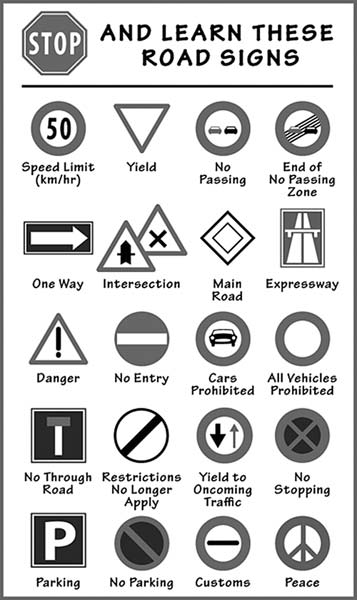
Maps and Signage: A good map is essential (see here). While most roads are numbered, the numbers rarely appear on signs. Instead, do as the Croatians and Slovenes do, and navigate by town name—at every major intersection, directional signs point to nearby towns and cities. The color of the sign tells you what type of road you’re approaching: yellow is a normal road, while blue (in Croatia) or green (in Slovenia) indicates that the route is via expressway. Brown indicates a cultural or natural attraction (such as a castle or a cave). Learn the universal road signs. As you approach any town, follow the Centar signs (usually also signed with a bull’s-eye symbol).
Bosnian Detour: If you’ll be driving along the Dalmatian Coast, notice that between Split and Dubrovnik, you’ll actually pass through Bosnia-Herzegovina for a few miles (through the town of Neum). Don’t stress about this international detour—it lasts about 20 minutes, and the borders are a breezy formality (you may need to show your passport, but generally you’ll just be waved through; for details, see here).
Parking: Get parking advice from your hotel, or look for the blue-and-white P signs. Street parking marked with blue lines must be paid for (look for pay-and-display parking meters, or ask at a nearby newsstand if you can pay for parking there). Parking is a costly headache in big cities. You’ll pay about $15-25 a day to park safely. Rental-car theft can be a problem in cities, so ask at your hotel for advice. Many coastal towns—such as Rovinj and Piran—are off-limits to cars...unless you’re sleeping in the city center, in which case you may be granted permission to drive in just long enough to drop off your bags, then return to the parking lot outside of town. Ask your hotelier about this in advance.
Croatia is a little country with long distances (for example, it’s at least a nine-hour drive from Zagreb to Dubrovnik), so flying can save you a lot of time. Flying also makes sense if you’re going to Sarajevo, which is relatively far from other destinations in this book, but easily connected to Zagreb by two daily flights on Croatia Airlines.
Each country has its own national air carrier: Croatia’s is Croatia Airlines (www.croatiaairlines.com), while Slovenia has Adria Airways (www.adria-airways.com). Both airlines offer flights connecting their big cities to destinations within Croatia and Slovenia, and to most major European capitals. And both carriers sell a handful of seats on certain flights at deeply discounted promotional rates. For example, a Croatia Airlines “FlyPromo” ticket from Zagreb to Split or Dubrovnik can be as inexpensive as $50—cheaper and much faster than taking the bus. These cheap seats sell out fast, so try to book several weeks ahead.
To connect to other parts of Europe, check with the low-cost airlines. The best comparison search engine for both international and intra-European flights is www.kayak.com. For inexpensive flights within Europe, try www.skyscanner.com or www.hipmunk.com.
Well-known cheapo carriers that fly to cities in Croatia or Slovenia include easyJet (www.easyjet.com), Ryanair (www.ryanair.com), Wizz Air (www.wizzair.com), and Norwegian Air (www.norwegian.no). If you’re not sure who flies to your destination, check its airport’s website for a list of carriers.
Be aware of the potential drawbacks of flying on the cheap: nonrefundable and nonchangeable tickets, minimal or nonexistent customer assistance, treks to airports far outside town, and stingy baggage allowances with steep overage fees. If you’re traveling with lots of luggage, a cheap flight can quickly become a bad deal. To avoid unpleasant surprises, read the small print before you book.
Rick Steves’ Croatia & Slovenia is one of many books in my series on European travel, which includes country guidebooks, city guidebooks (Rome, Florence, Paris, London, etc.), Snapshot guides (excerpted chapters from my country guides), Pocket Guides (full-color little books on big cities), and my budget-travel skills handbook, Rick Steves’ Europe Through the Back Door. Most of my titles are available as ebooks. My phrase books—for German, French, Italian, Spanish, and Portuguese—are practical and budget-oriented. My other books include Europe 101 (a crash course on art and history designed for travelers); Mediterranean Cruise Ports and Northern European Cruise Ports (how to make the most of your time in port); and Travel as a Political Act (a travelogue sprinkled with tips for bringing home a global perspective). A more complete list of my titles appears near the end of this book.

Video: My public television series, Rick Steves’ Europe, covers European destinations in 100 shows, including episodes on Croatia and Slovenia. To watch episodes online, visit www.hulu.com; for scripts and local airtimes, see www.ricksteves.com/tv.
Audio: My weekly public radio show, Travel with Rick Steves, features interviews with travel experts from around the world. All of this free audio content is available at Rick Steves Audio Europe, an extensive online library organized by destination. Choose whatever interests you, and download it via the Rick Steves Audio Europe smartphone app, www.ricksteves.com/audioeurope, iTunes, or Google Play.
The black-and-white maps in this book are concise and simple, designed to help you locate recommended places and get to local TIs, where you can pick up more in-depth maps of towns or regions (usually free). Better maps are sold at newsstands and bookstores. Before you buy a map, look at it to be sure it has the level of detail you want.
For navigation—whether by car or on foot—I rely heavily on electronic maps on my smartphone or tablet. The Google Maps or Apple Maps apps work just like back home. But because they work with the Internet, you’ll either have to download the maps and route instructions you need while on Wi-Fi, or incur data roaming charges. Before I head out each morning, I make a point to use my hotel’s Wi-Fi hotspot to download all of the maps I’ll need for that day. (Once you’re underway, if you need to update your route, check traffic conditions, or enable turn-by-turn voice instructions, you’ll have to use data roaming or find another hotspot. However, GPS information—that blinking blue dot showing where you are on that map—does not use the Internet, and works fine offline.) One limitation of these route-finding apps is that they can only download one route at a time. Consider paying for an offline mapping app (such as CityMaps2Go), which lets you download as many detailed maps as you want that live entirely on your phone and require no further access to the Internet. While these work great for orientation, they don’t offer route-finding instructions.
If you prefer paper maps and are driving, you’ll want to pick up a good, detailed map in Europe. My favorite maps of the region are by the Slovenian cartographer Kod & Kam (sold all over). Their 1:500,000-scale Croatia map (Hrvaška in Slovene, Hrvatska in Croatian) covers everything in this book (including Slovenia, Bosnia-Herzegovina, and most of Montenegro) with all the detail you’ll need. For just Slovenia, pick up the good 1:300,000 Autokarta Slovenija map, sold at tourist shops everywhere (around €8, generally cheaper at TIs than at bookstores or travel agencies). Even better, the Slovenian Tourist Board publishes free excerpts of this same map, divided into three regional zones called “Next Exit”—to save some money, look for these at TIs and skip buying the big map. If you’ll be hiking, especially in the Slovenian Alps, you’ll find no shortage of excellent, very detailed maps locally.
If you’re like most travelers, this book is all you need. But if you’re heading beyond my recommended destinations, $40 for extra maps and books is money well spent.
The following books are worthwhile, though most are not updated annually; check the publication date before you buy. The Rough Guides, which individually cover Croatia and Slovenia, are packed with historical and cultural insight. The Lonely Planet guides (with separate Croatia and Slovenia books, and a handy Southeastern Europe book that includes Croatia, Montenegro, Bosnia-Herzegovina, and more) are similar, but are designed more for travelers than for intellectuals. If choosing between these two titles, I’d buy the one that was published most recently.
Dorling Kindersley publishes snazzy Eyewitness Guides, one covering Croatia and another just on Dubrovnik and the Dalmatian Coast. While pretty to look at, these books weigh a ton and are skimpy on actual content.
If your travels take you to nearby countries, consider Rick Steves’ Eastern Europe, which covers parts of Croatia and Slovenia, plus Hungary, Poland, the Czech Republic, and Slovakia.
To learn about Croatia and Slovenia past and present, check out a few of these books and films.
Books: Lonnie Johnson’s Central Europe: Enemies, Neighbors, Friends is the best historical overview of Croatia, Slovenia, and their neighboring countries. The most readable history of Croatia itself is Benjamin Curtis’ A Traveller’s History of Croatia. Rebecca West’s classic, bricklike Black Lamb and Grey Falcon is the definitive travelogue of the Yugoslav lands (written during a journey between the two World Wars). For a more recent take, Croatian journalist Slavenka Drakulić has written a quartet of insightful essay collections from a woman’s perspective: Café Europa: Life After Communism; The Balkan Express; How We Survived Communism and Even Laughed; and A Guided Tour Through the Museum of Communism. Drakulić’s They Would Never Hurt a Fly profiles Yugoslav war criminals. For a thorough explanation of how and why Yugoslavia broke apart, read Yugoslavia: Death of a Nation (by Laura Silber and Allan Little). Joe Sacco’s powerful graphic novel, Safe Area Goražde, describes the author’s actual experience living in a mostly Muslim town in Bosnia-Herzegovina while it was surrounded by Serb forces during the wars of the 1990s. Sacco’s follow-up, The Fixer and Other Stories, focuses on real-life characters he met in siege-time Sarajevo.
Films: To grasp the wars that shook this region in the early 1990s, there’s no better film than the Slovene-produced No Man’s Land, which won the 2002 Oscar for Best Foreign Film. The BBC produced a remarkable six-hour documentary series called The Death of Yugoslavia, featuring actual interviews with all of the key players (it’s difficult to find on home video, but try searching for “Death of Yugoslavia” on YouTube; the book Yugoslavia: Death of a Nation, noted above, was a companion piece to this film). BBC also produced a harrowing documentary about the infamous Bosnian massacre, Srebrenica: A Cry From the Grave (also available on YouTube). Angelina Jolie wrote and directed (but did not appear in) 2011’s wrenching, difficult-to-watch In the Land of Blood and Honey, a love story set against the grotesque backdrop of the war in Bosnia.
On a lighter note, a classic from Tito-era Yugoslavia, The Battle of Neretva (1969), imported Hollywood talent in the form of Yul Brynner and Orson Welles to tell the story of a pivotal and inspiring battle in the fight against the Nazis. More recent Croatian films worth watching include Border Post (Karaula, 2006), about various Yugoslav soldiers working together just before the war broke out, and When Father Was Away on Business (1985), about a prisoner on the Tito-era gulag island of Goli Otok, near Rab. Other local movies include Armin (2007), How the War Started on My Island (1996), Underground (1995), and Tito and Me (1992).
Fans of HBO’s Game of Thrones may recognize locations in Dubrovnik and other Croatian coastal towns, where much of the series is filmed (for details, see here).
This list includes selected festivals in this region, plus national holidays. Many sights and banks close down on national holidays—keep this in mind when planning your itinerary. As both Croatia and Slovenia are Catholic, religious holidays—Easter, Ascension Day, Whitsunday, and Whitmonday—are a big deal, and frequent. Muslims (most predominant in Bosnia) observe the month of Ramadan. Before planning a trip around a festival, verify its dates by checking the festival’s website or contacting the national tourist office in Croatia (http://us.croatia.hr) or Slovenia (www.slovenia.info). Unless stated otherwise, all holidays listed here apply to both Croatia and Slovenia.
For sports events, see www.sportsevents365.com for schedules and ticket information.
| Jan 1 |
New Year’s Day |
| Jan 6 |
Epiphany |
| Feb |
Kurentovanje Carnival, Ptuj, Slovenia (11 days leading up to Ash Wednesday—Feb 22-March 4 in 2014, Feb 7-17 in 2015, www.kurentovanje.net) |
| Feb 8 |
National Day of Culture, Slovenia (celebrates Slovenian culture and national poet France Prešeren) |
| Late March |
Ski Flying World Championships, Planica, Slovenia (3 days, www.planica.si) |
| Easter |
April 20 in 2014, April 5 in 2015 |
| Easter Monday |
April 21 in 2014, April 6 in 2015 |
| April 27 |
National Resistance Day, Slovenia |
| May 1 |
Labor Day, Croatia and Slovenia |
| Ascension |
May 29 in 2014, May 14 in 2015 |
| Whitsunday |
June 8-9 in 2014, May 24-25 in 2015 |
| (Pentecost) and Whitmonday Early June |
Dance Week Festival, Zagreb, Croatia (www.danceweekfestival.com)
|
| Corpus Christi |
June 19 in 2014, June 4 in 2015 |
| June 22 |
Antifascist Struggle Day, Croatia |
| June 25 |
National Day, Slovenia; Statehood Day, Croatia |
| Ramadan |
Muslim holy month, Bosnia-Herzegovina (June 28-July 27 in 2014, June 18-July 17 in 2015) |
| July 10-Aug 25 |
Dubrovnik Summer Festival, Croatia (www.dubrovnik-festival.hr) |
| Early July-late Aug |
Ljubljana Festival, Slovenia (www.ljubljanafestival.si) |
| Late July |
International Folklore Festival, Zagreb, Croatia (5 days, costumes, songs, dances from all over Croatia; www.msf.hr) |
| Late July or early Aug |
Motovun Film Festival, Istria, Croatia (www.motovunfilmfestival.com) |
| Aug 5 |
National Thanksgiving Day, Croatia |
| Aug 15 |
Assumption of Mary |
| Mid-Aug |
Diocletian Days, Split, Croatia (toga-clad celebrations) |
| Late Sept-early Nov |
White Truffle Days, Livade, Croatia (Istrian truffle festival, weekends only) |
| Oct 8 |
Independence Day, Croatia |
| Oct 31 |
Reformation Day, Slovenia |
| Nov 1 |
All Saints’ Day/Remembrance Day (religious festival, some closures) |
| Nov 11 |
St. Martin’s Day (official first day of wine season) |
| Dec 24-25 |
Christmas Eve and Christmas Day |
| Dec 26 |
Boxing Day/St. Stephen’s Day; Independence and Unity Day, Slovenia |
• In Europe, dates appear as day/month/year, so Christmas is 25/12/2015.
• Commas are decimal points and decimals are commas. A dollar and a half is 1,50, one thousand is 1.000, and there are 5.280 feet in a mile.
• When counting with fingers, start with your thumb. If you hold up your first finger to request one item, you’ll probably get two.
• What Americans call the second floor of a building is the first floor in Europe.
• On escalators and moving sidewalks, Europeans keep the left “lane” open for passing. Keep to the right.
A kilogram is 2.2 pounds, and l liter is about a quart, or almost four to a gallon. A kilometer is six-tenths of a mile. I figure kilometers to miles by cutting them in half and adding back 10 percent of the original (120 km: 60 + 12 = 72 miles, 300 km: 150 + 30 = 180 miles).
1 foot = 0.3 meter
1 yard = 0.9 meter
1 mile = 1.6 kilometers
1 centimeter = 0.4 inch
1 meter = 39.4 inches
1 kilometer = 0.62 mile
1 square yard = 0.8 square meter
1 square mile = 2.6 square kilometers
1 ounce = 28 grams
1 quart = 0.95 liter
1 kilogram = 2.2 pounds
32°F = 0°C
When shopping for clothing, use these US-to-European comparisons as general guidelines (but note that no conversion is perfect).
• Women’s dresses and blouses: Add 30
(US size 10 = European size 40)
• Men’s suits and jackets: Add 10
(US size 40 regular = European size 50)
• Men’s shirts: Multiply by 2 and add about 8
(US size 15 collar = European size 38)
• Women’s shoes: Add about 30
(US size 8 = European size 38-39)
• Men’s shoes: Add 32-34
(US size 9 = European size 41; US size 11 = European size 45)
First line is the average daily high; second line, average daily low; third line, average days with some rain. For more detailed weather statistics for destinations in this book (as well as the rest of the world), check www.wunderground.com.
Europe takes its temperature using the Celsius scale, while we opt for Fahrenheit. For a rough conversion from Celsius to Fahrenheit, double the number and add 30. For weather, remember that 28°C is 82°F—perfect. For health, 37°C is just right.
In the phonetics, ī sounds like the long i in “light,” and bolded syllables are stressed.
| English |
Croatian |
Pronunciation |
| Hello. (formal) |
Dobar dan. |
doh-bahr dahn |
| Hi. / Bye. (informal) |
Bok. |
bohk |
| Do you speak English? |
Govorite li engleski? |
goh-voh-ree-teh lee ehn-glehs-kee |
| Yes. / No. |
Da. / Ne. |
dah / neh |
| I (don’t) understand. |
(Ne) razumijem. |
(neh) rah-zoo-mee-yehm |
| Please. / You’re welcome. |
Molim. |
moh-leem |
| Thank you (very much). |
Hvala (ljepa). |
hvah-lah (lyeh-pah) |
| Excuse me. / I’m sorry. |
Oprostite. |
oh-proh-stee-teh |
| problem |
problem |
proh-blehm |
| No problem. |
Nema problema. |
neh-mah proh-bleh-mah |
| Good. |
Dobro. |
doh-broh |
| Goodbye. |
Do viđenija. |
doh veed-jay-neeah |
| one / two |
jedan / dva |
yeh-dahn / dvah |
| three / four |
tri / četiri |
tree / cheh-teh-ree |
| five / six |
pet / šest |
peht / shehst |
| seven / eight |
sedam / osam |
seh-dahm / oh-sahm |
| nine / ten |
devet / deset |
deh-veht / deh-seht |
| hundred / thousand |
sto / tisuća |
stoh / tee-soo-chah |
| How much? |
Koliko? |
koh-lee-koh |
| local currency |
kuna |
koo-nah |
| Write it? |
Napišite? |
nah-peesh-ee-teh |
| Is it free? |
Da li je besplatno? |
dah lee yeh beh-splaht-noh |
| Is it included? |
Da li je uključeno? |
dah lee yeh ook-lyoo-cheh-noh |
| Where can I find / buy...? |
Gdje mogu pronaći / kupiti...? |
guh-dyeh moh-goo proh-nah-chee / koo-pee-tee |
| I’d like / We’d like... |
Želio bih / Željeli bismo... |
zheh-lee-oh beeh / zheh-lyeh-lee bees-moh |
| ...a room. |
...sobu. |
soh-boo |
| ...a ticket to ___. |
...kartu do ___. |
kar-too doh ___ |
| Is it possible? |
Da li je moguće? |
dah lee yeh moh-goo-cheh |
| Where is...? |
Gdje je...? |
guh-dyeh yeh |
| ...the train station |
...kolodvor |
koh-loh-dvor |
| ...the bus station |
...autobusni kolodvor |
ow-toh-boos-nee koh-loh-dvor |
| ...the tourist information office |
...turističko informativni centar |
too-ree-steech-koh een-for-mah-teev-nee tsehn-tahr |
| ...the toilet |
...vece (WC) |
veht-seh |
| men |
muški |
moosh-kee |
| women |
ženski |
zhehn-skee |
| left / right |
lijevo / desno |
lee-yeh-voh / dehs-noh |
| straight |
ravno |
rahv-noh |
| At what time... |
U koliko sati... |
oo koh-lee-koh sah-tee |
| ...does this open / close? |
...otvara / zatvara? |
oht-vah-rah / zaht-vah-rah |
| (Just) a moment. |
(Samo) trenutak. |
(sah-moh) treh-noo-tahk |
| now / soon / later |
sada / uskoro / kasnije |
sah-dah / oos-koh-roh / kahs-nee-yeh |
| today / tomorrow |
danas / sutra |
dah-nahs / soo-trah |
In a Croatian Restaurant
| English |
Croatian |
Pronunciation |
| I’d like to reserve... |
Rezervirao bih... |
reh-zehr-veer-ow beeh |
| We’d like to reserve... |
Rezervirali bismo... |
reh-zehr-vee-rah-lee bees-moh |
| ...a table for one / two. |
...stol za jednog / dva. |
stohl zah yehd-nog / dvah |
| Non-smoking. |
Za nepušače. |
zah neh-poo-shah-cheh |
| Is this table free? |
Da li je ovaj stol slobodan? |
dah lee yeh oh-vī stohl sloh-boh-dahn |
| Can I help you? |
Izvolite? |
eez-voh-lee-teh |
| The menu (in English), please. |
Jelovnik (na engleskom), molim. |
yeh-lohv-neek (nah ehn-glehs-kohm) moh-leem |
| service (not) included |
posluga (nije) uključena |
poh-sloo-gah (nee-yeh) ook-lyoo-cheh-nah |
| cover charge |
couvert |
koo-vehr |
| “to go” |
za ponjeti |
zah pohn-yeh-tee |
| with / without |
sa / bez |
sah / behz |
| and / or |
i / ili |
ee / ee-lee |
| fixed-price meal (of the day) |
(dnevni) meni |
(duh-nehv-nee)meh-nee |
| specialty of the house |
specijalitet kuće |
speht-see-yah-lee-teht koo-cheh |
| half portion |
pola porcije |
poh-lah port-see-yeh |
| daily special |
jelo dana |
yeh-loh dah-nah |
| fixed-price meal for tourists |
turistički meni |
too-ree-steech-kee meh-nee |
| appetizers |
predjela |
prehd-yeh-lah |
| bread |
kruh |
krooh |
| cheese |
sir |
seer |
| sandwich |
sendvič |
send-veech |
| soup |
juha |
yoo-hah |
| salad |
salata |
sah-lah-tah |
| meat |
meso |
may-soh |
| poultry |
perad |
peh-rahd |
| fish |
riba |
ree-bah |
| seafood |
morska hrana |
mohr-skah hrah-nah |
| fruit |
voće |
voh-cheh |
| vegetables |
povrće |
poh-vur-cheh |
| dessert |
desert |
deh-sayrt |
| (tap) water |
voda (od slavine) |
voh-dah (ohd slah-vee-neh) |
| mineral water |
mineralna voda |
mee-neh-rahl-nah voh-dah |
| milk |
mlijeko |
mlee-yeh-koh |
| (orange) juice |
sok (od naranče) |
sohk (ohd nah-rahn-cheh) |
| coffee |
kava |
kah-vah |
| tea |
čaj |
chī |
| wine |
vino |
vee-noh |
| red / white |
crno / bijelo |
tsehr-noh / bee-yeh-loh |
| sweet / dry / semi-dry |
slatko / suho / polusuho |
slaht-koh / soo-hoh / poh-loo-soo-hoh |
| glass / bottle |
čaša / boca |
chah-shah / boht-sah |
| beer |
pivo |
pee-voh |
| Cheers! |
Živjeli! |
zhee-vyeh-lee |
| More. / Another. |
Još. / Još jedno. |
yohsh / yohsh yehd-noh |
| The same. |
Isto. |
ees-toh |
| Bill, please. |
Račun, molim. |
rah-choon moh-leem |
| tip |
napojnica |
nah-poy-neet-sah |
| Delicious! |
Izvrsno! |
eez-vur-snoh |
In the phonetics, ī sounds like the long i in “light,” and bolded syllables are stressed. The vowel “eh” sometimes sounds closer to “ay” (depending on the speaker).
| English |
Slovenian |
Pronunciation |
| Hello. (formal) |
Dober dan. |
doh-behr dahn |
| Hi. / Bye. (informal) |
Živjo. |
zheev-yoh |
| Do you speak English? |
Ali govorite angleško? |
ah-lee goh-voh-ree-teh ahn-glehsh-koh |
| Yes. / No. |
Ja. / Ne. |
yah / neh |
| I (don’t) understand. |
(Ne) razumem. |
(neh) rah-zoo-mehm |
| Please. / You’re welcome. |
Prosim. |
proh-seem |
| Thank you (very much). |
Hvala (lepa). |
hvah-lah (leh-pah) |
| Excuse me. / I’m sorry. |
Oprostite. |
oh-proh-stee-teh |
| problem |
problem |
proh-blehm |
| No problem. |
Ni problema. |
nee proh-bleh-mah |
| Good. |
Dobro. |
doh-broh |
| Goodbye. |
Na svidenje. |
nah svee-dehn-yeh |
| one / two |
ena / dve |
eh-nah / dveh |
| three / four |
tri / štiri |
tree / shtee-ree |
| five / six |
pet / šest |
peht / shehst |
| seven / eight |
sedem / osem |
seh-dehm / oh-sehm |
| nine / ten |
devet / deset |
deh-veht / deh-seht |
| hundred / thousand |
sto / tisoč |
stoh / tee-sohch |
| How much? |
Koliko? |
koh-lee-koh |
| local currency |
euro |
ee-oo-roh |
| Write it? |
Napišite? |
nah-peesh-ee-teh |
| Is it free? |
Ali je brezplačno? |
ah-lee yeh brehz-plahch-noh |
| Is it included? |
Ali je vključeno? |
ah-lee yeh vuk-lyoo-cheh-noh |
| Where can I find / buy...? |
Kje lahko najdem / kupim...? |
kyeh lah-koh nī-dehm / koo-peem |
| I’d / We’d like... |
Želel / Želeli bi... |
zheh-leeoo / zheh-leh-lee bee |
| ...a room. |
...sobo. |
soh-boh |
| ...a ticket to ___. |
...vozovnico do ___. |
voh-zohv-neet-soh doh |
| Is it possible? |
Ali je možno? |
ah-lee yeh mohzh-noh |
| Where is...? |
Kje je...? |
kyeh yeh |
| ...the train station |
...železniška postaja |
zheh-lehz-neesh-kah pohs-tī-yah |
| ...the bus station |
...avtobusna postaja |
ow-toh-boos-nah pohs-tī-yah |
| ...the tourist information office |
...turistično informacijski center |
too-rees-teech-noh een-for-maht-see-skee tsehn-tehr |
| ...the toilet |
...vece (WC) |
veht-seh |
| men |
moški |
mohsh-kee |
| women |
ženski |
zhehn-skee |
| left / right |
levo / desno |
leh-voh / dehs-noh |
| straight |
naravnost |
nah-rahv-nohst |
| At what time... |
Ob kateri uri... |
ohb kah-teh-ree oo-ree |
| ...does this open / close? |
...se odpre / zapre? |
seh ohd-preh / zah-preh |
| (Just) a moment. |
(Samo) trenutek. |
(sah-moh) treh-noo-tehk |
| now / soon / later |
zdaj / kmalu / pozneje |
zuh-dī / kuh-mah-loo / pohz-neh-yeh |
| today / tomorrow |
danes / jutri |
dah-nehs / yoo-tree |
In a Slovenian Restaurant
| English |
Slovenian |
Pronunciation |
| I’d like to reserve... |
Rezerviral bi... |
reh-zehr-vee-rahl bee |
| We’d like to reserve... |
Rezervirali bi... |
reh-zehr-vee-rah-lee bee |
| ...a table for one / two. |
...mizo za enega / dva. |
mee-zoh zah eh-neh-gah / dvah |
| Non-smoking. |
Za nekadilce. |
zah neh-kah-deelt-seh |
| Is this table free? |
Ali je ta miza prosta? |
ah-lee yeh tah mee-zah proh-stah |
| Can I help you? |
Izvolite? |
eez-voh-lee-teh |
| The menu (in English), please. |
Jedilni list (v angleščini), prosim. |
yeh-deel-nee leest (vuh ahn-glehsh-chee-nee) proh-seem |
| service (not) included |
postrežba (ni) vključena |
post-rehzh-bah (nee) vuk-lyoo-cheh-nah |
| cover charge |
pogrinjek |
poh-green-yehk |
| “to go” |
za s sabo |
zah sah-boh |
| with / without |
z / brez |
zuh / brehz |
| and / or |
in / ali |
een / ah-lee |
| fixed-price meal (of the day) |
(dnevni) meni |
(duh-new-nee) meh-nee |
| specialty of the house |
specialiteta hiše |
speht-see-ah-lee-teh-tah hee-sheh |
| half portion |
polovična porcija |
poh-loh-veech-nah port-see-yah |
| daily special |
dnevna ponudba |
duh-new-nah poh-nood-bah |
| fixed-price meal for tourists |
turistični meni |
too-rees-teech-nee meh-nee |
| appetizers |
predjedi |
prehd-yeh-dee |
| bread |
kruh |
krooh |
| cheese |
sir |
seer |
| sandwich |
sendvič |
send-veech |
| soup |
juha |
yoo-hah |
| salad |
solata |
soh-lah-tah |
| meat |
meso |
meh-soh |
| poultry |
perutnina |
peh-root-nee-nah |
| fish |
riba |
ree-bah |
| seafood |
morska hrana |
mohr-skah hrah-nah |
| fruit |
sadje |
sahd-yeh |
| vegetables |
zelenjava |
zeh-lehn-yah-vah |
| dessert |
sladica |
slah-deet-sah |
| (tap) water |
voda (iz pipe) |
voh-dah (eez pee-peh) |
| mineral water |
mineralna voda |
mee-neh-rahl-nah voh-dah |
| milk |
mleko |
mleh-koh |
| (orange) juice |
(pomarančni) sok |
(poh-mah-rahnch-nee) sohk |
| coffee |
kava |
kah-vah |
| tea |
čaj |
chī |
| wine |
vino |
vee-noh |
| red / white |
rdeče / belo |
ahr-deh-cheh / beh-loh |
| sweet / dry / semi-dry |
sladko / suho / polsuho |
slahd-koh / soo-hoh / pohl-soo-hoh |
| glass / bottle |
kozarec / steklenica |
koh-zah-rehts / stehk-leh-neet-sah |
| beer |
pivo |
pee-voh |
| Cheers! |
Na zdravje! |
nah zdrow-yeh |
| More. / Another. |
Še. / Še eno. |
sheh / sheh eh-noh |
| The same. |
Isto. |
ees-toh |
| Bill, please. |
Račun, prosim. |
rah-choon proh-seem |
| tip |
napitnina |
nah-peet-nee-nah |
| Delicious! |
Odlično! |
ohd-leech-noh |
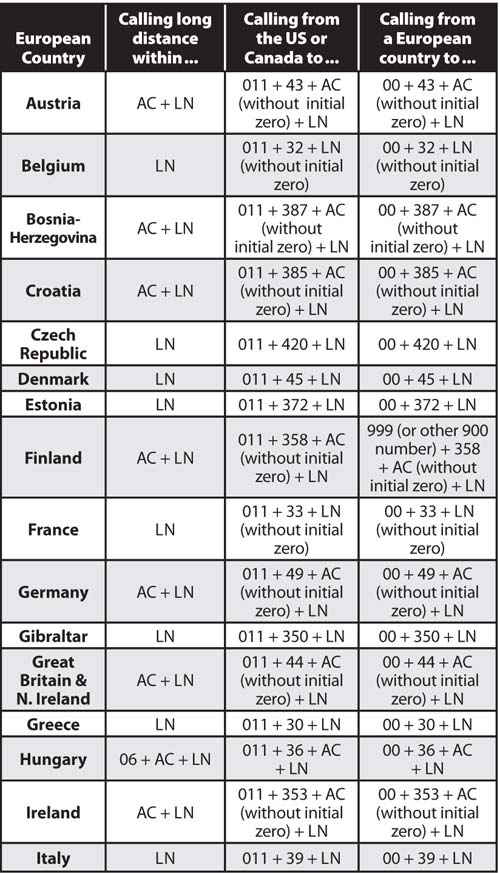
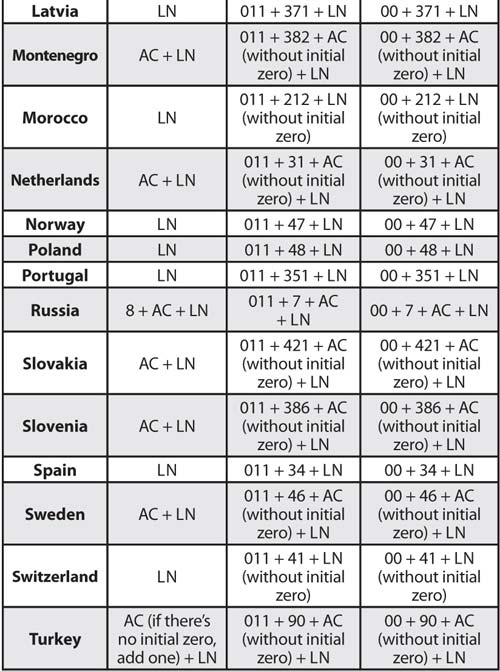


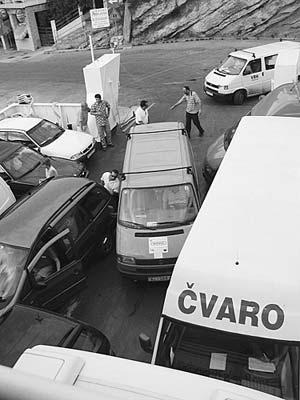
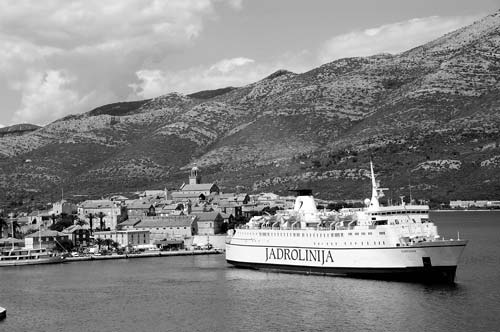

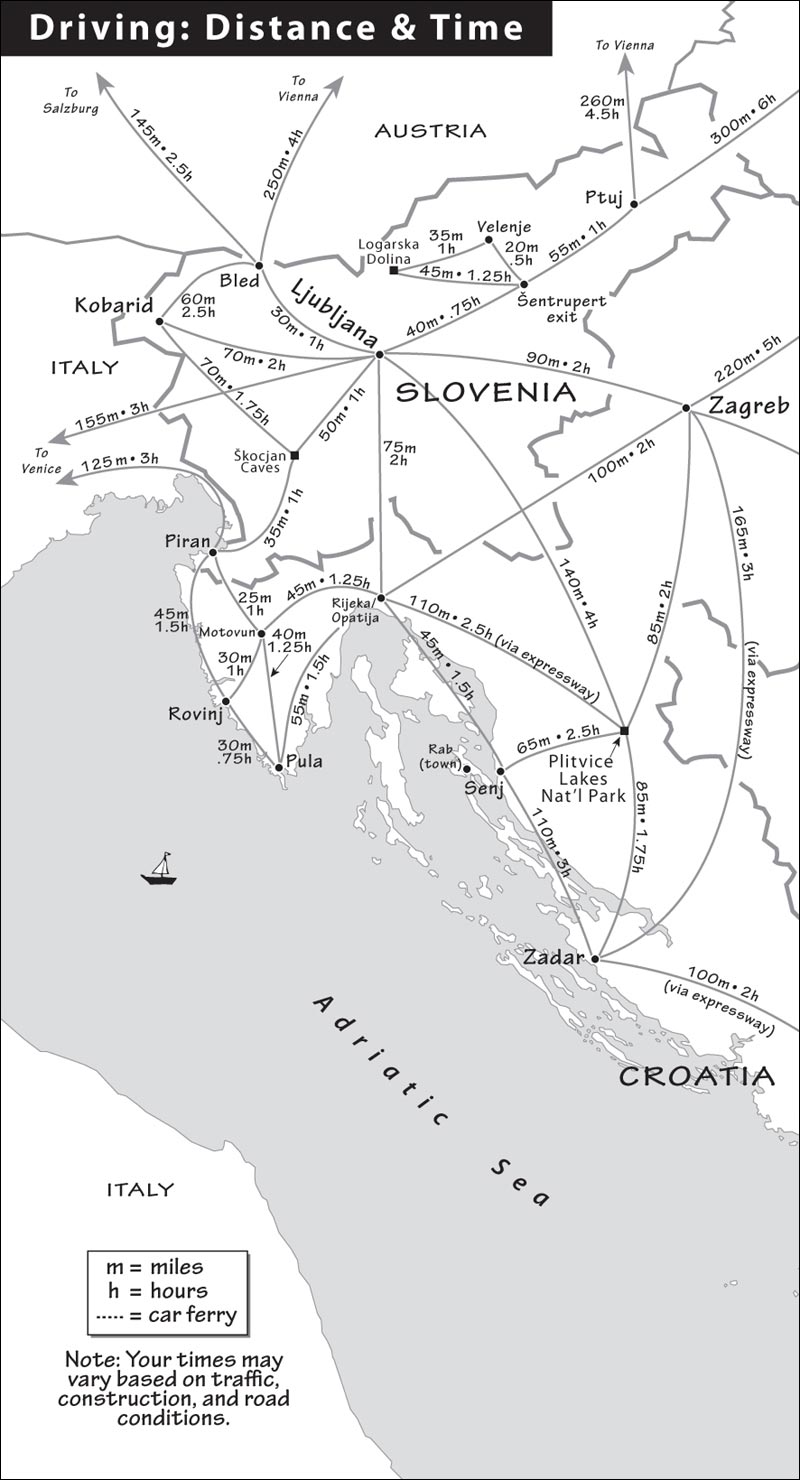
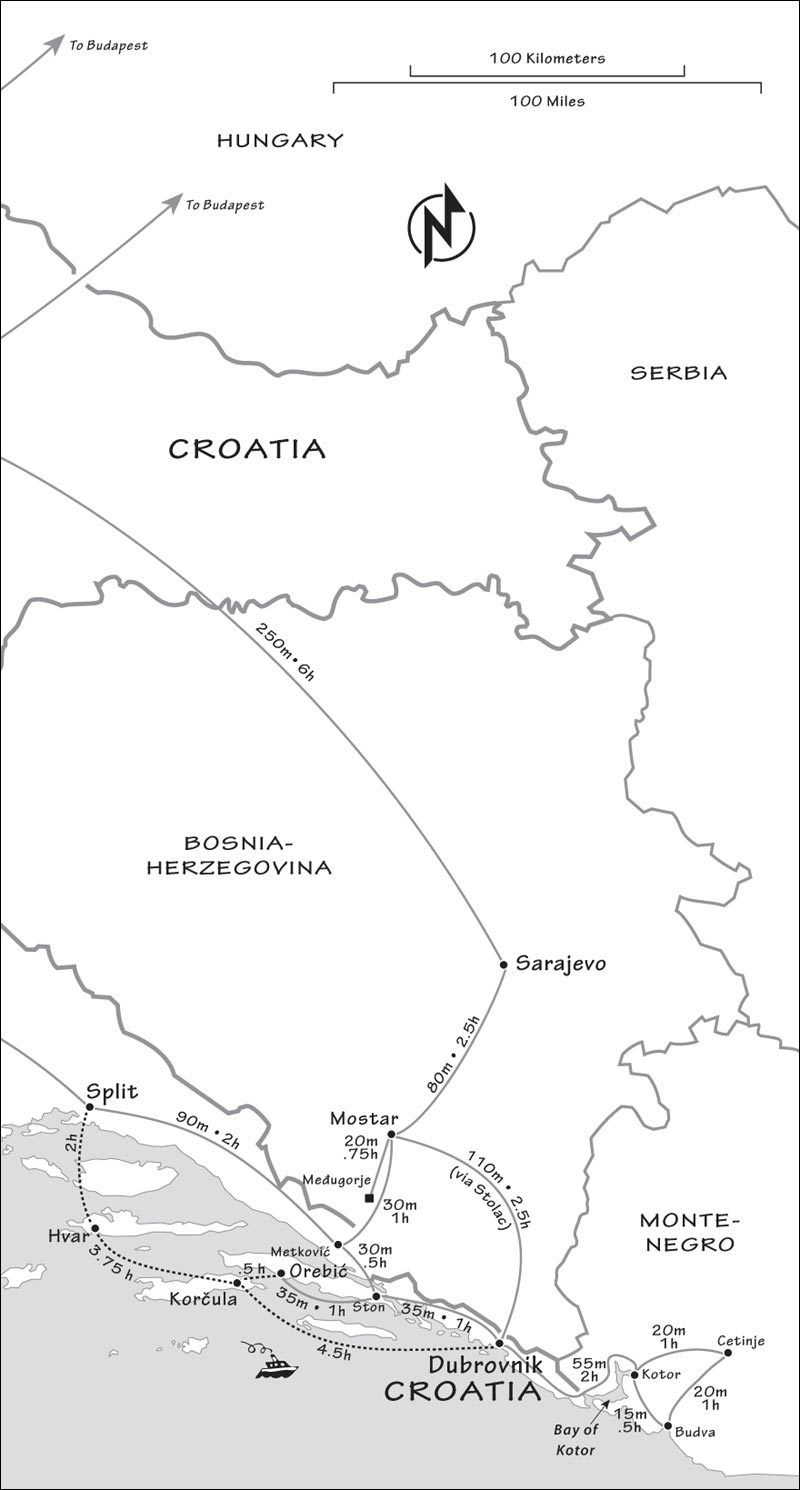
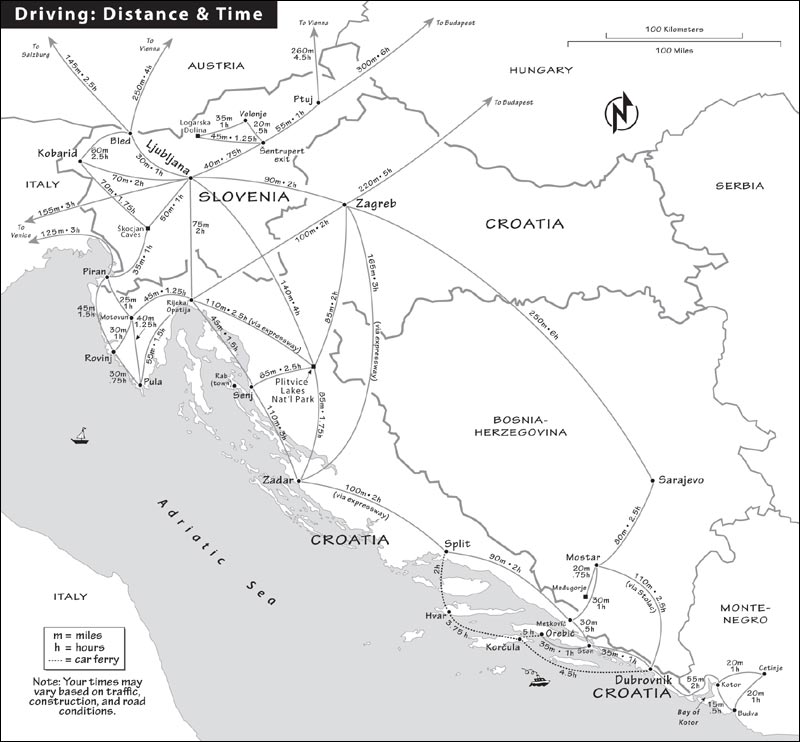
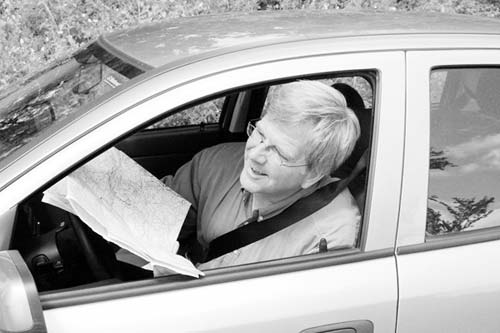
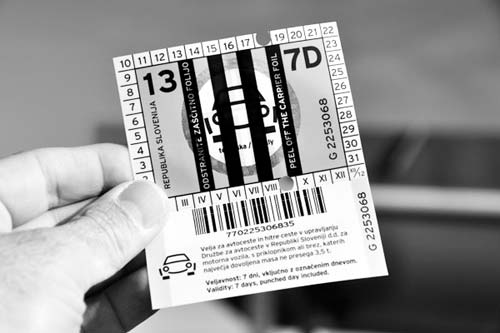

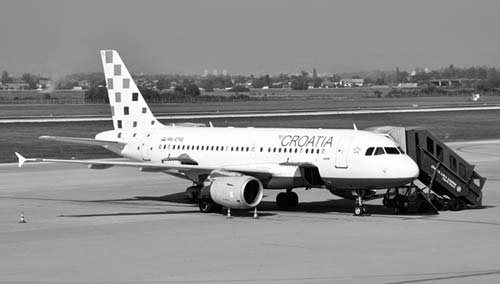

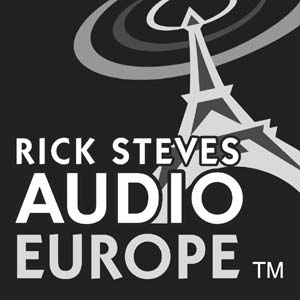
 , 4 =
, 4 =  , 7 =
, 7 =  .
.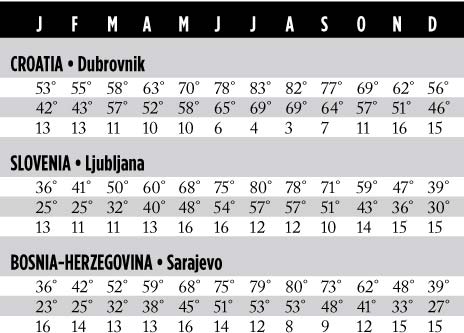
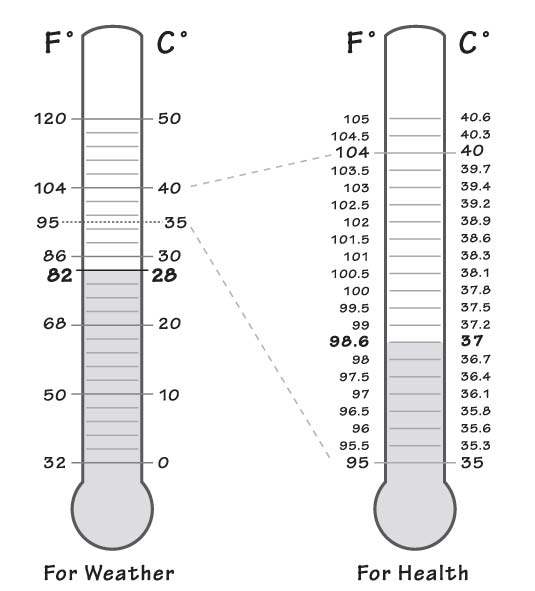
 5 shirts: long- & short-sleeve
5 shirts: long- & short-sleeve